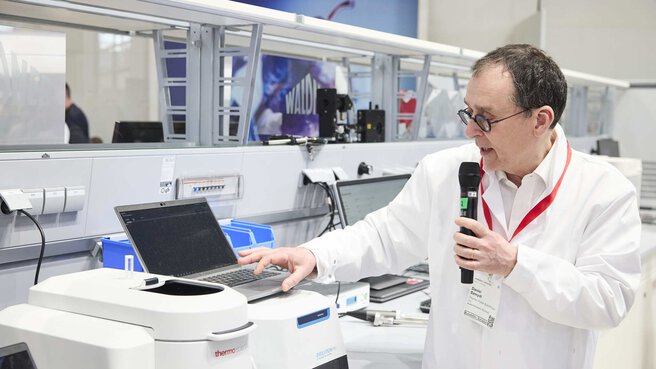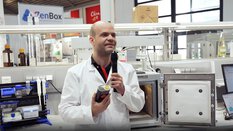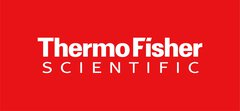In the laboratory of the future - special show Live Lab
Live Lab @ analytica 2026
What does a state-of-the-art laboratory look like today and what equipment is being used? If you want to get an idea of this, you shouldn't miss the one-hour live demonstrations on the laboratory line.
Visitors will be able to gain practical insights and experience all common procedures or specific methods in a real laboratory environment. In the Live Lab in Hall B2 (B2.333), the work steps from sample preparation and sample measurement to analysis and evaluation of the results will be demonstrated.
There will also be time & space for questions: Discuss with the experts and exchange ideas: Whether on a current use case from your research laboratory or an issue from the development laboratory.
A show on the topic of digital transformation is set up next to the Live Lab. Presentations will also take place here three times a day, alternating with the Live Lab.
Live Lab partner
Impressions 2024
Video Live Lab 2024
























